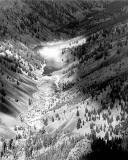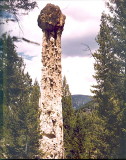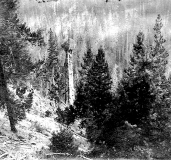No products in the cart.
That Hoodoo
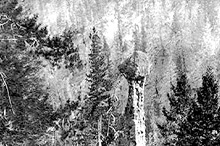
A Rude Spire in the Sticks
By Rick Just
Last December, Rick penned an item in his “Speaking of Idaho” history blog that caught our attention. You’ll find out why at the end of his piece, an edited version of which we reprint here with permission.
One day I was browsing through the Twenty-Third Biennial Report of the State Historical Society of Idaho published in 1922, as one does. It caught my attention that the report listed all the monuments in Idaho and associated with Idaho at the time. I skimmed through the list, but will restrain myself to a single monument. In fact, I’ll give only cursory attention to the monument, because searching for more information about it led me down a path which, with liberal use of unnecessary words, I will describe.
The Sheepeater Monument was the one I wanted to research. It was located near the mouth of Big Creek where it runs into the Middle Fork Salmon River. I was doing an online image search for Sheepeater Monument when I came across a different structure that also was sometimes called Sheepeater Monument. It was an oddly shaped rock. It was actually more of a hoodoo, which is a geological term for a tall thin spire of rock that protrudes from the bottom of a basin. The hoodoo in question is—as technical jargon would have it—really, really tall. I found a reference that said seventy feet. I don’t know.
Photos show it towering over nearby trees. It is undeniably, let’s say, tree-like, in that it is tall and narrow but without the limbs one would usually find on a tall pine. A pole, then. It’s like a pole. Eons ago, some force, perhaps water followed later by wind, wore away layers of rock around it, leaving a shaft of rock. And, to top it off, there is a large boulder resting impossibly on the summit of the hoodoo.
The formation has had some colorful names I will leave up to you to imagine. It has a smaller pair of hoodoo companions nearby. This grouping of rude rocks at the head of Monumental Creek in Valley County is apparently why the creek is called that. We can be thankful for this unusual display of modesty on the part of the person who named it.
Photos of the formation are rare, for a couple of reasons. For one, the site is a bit challenging to find and hike to. Also, to get the entire formation in a shot requires some clever positioning by the photographer.
I did find one photo that may show the formation without its signature boulder on top. Say it isn’t so. Really. Let me know if you have recent, first-hand knowledge of the hoodoo. Rock or no rock, I await the revelation.
Aftermath of the 1909 Roosevelt flood, shown in 1935. Courtesy Robin McRae.
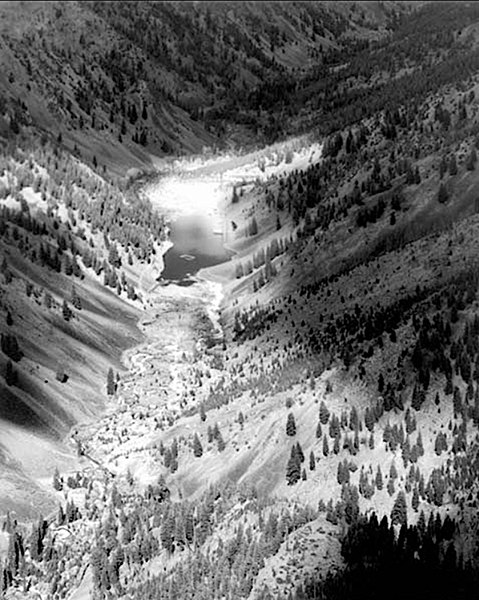
The hoodoo at Monumental Creek. Courtesy Robin McRae.
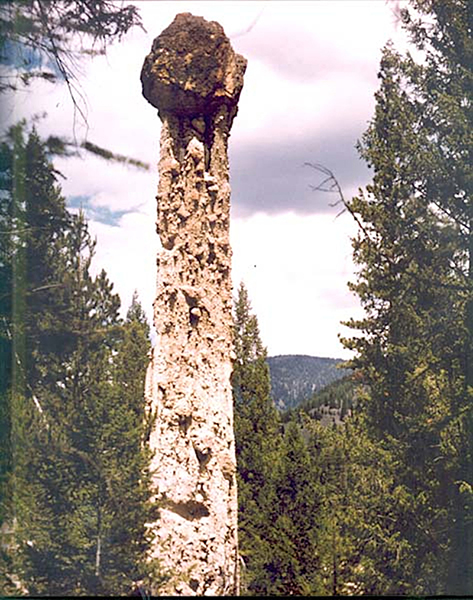
Another view of the strange formation. University of Idaho Archives.
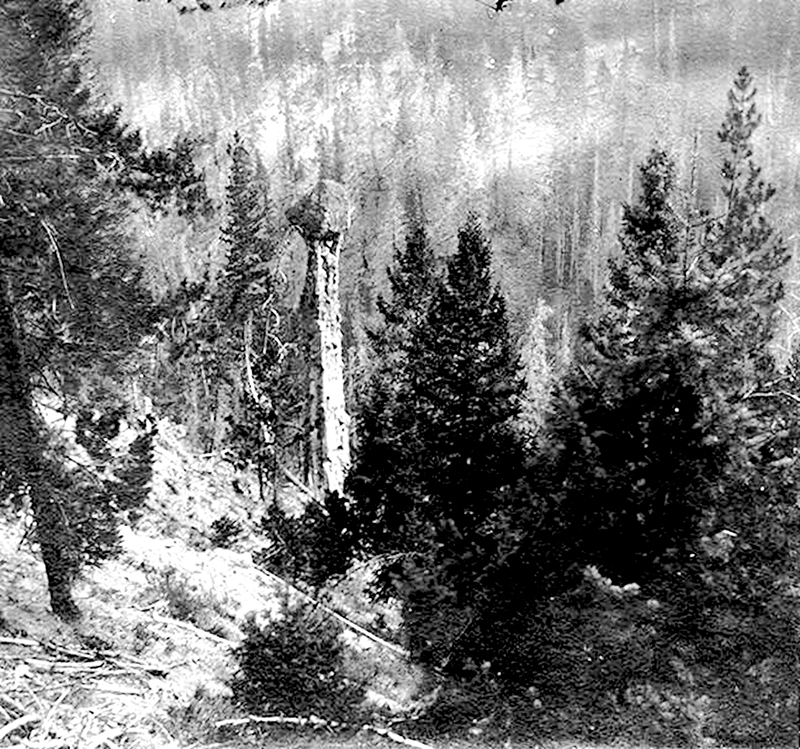
*****
Rick, we have first-hand info about this for you. It comes from Robin “Sandy” McRae, who wrote several stories for IDAHO magazine some years ago about the Thunder Mountain area, deep in the Payette National Forest, where his father was a miner. Sandy passed away in December 2023, two days short of his eighty-fourth birthday.
Throughout his life, he visited Thunder Mountain many times, and he lived a good deal of his youth in the mining town of Stibnite. One of his stories for us was about Roosevelt, which was drowned in 1909 by a mud-and-water slide off Thunder Mountain [see “Idaho’s Pompeii,” IDAHO magazine, April 2017]. In that story, Robin mentioned the monument, which was nearby, and provided a photo of it. Here’s what he wrote about it:
“Monumental Creek flowed in an S-shape through Roosevelt, roughly perpendicular to Mule Creek, which came down from Thunder Mountain. The namesake of Monumental Creek is an amazing geologic oddity that still stands nine miles below Lake Roosevelt. It’s an eighty-foot-tall monument of mud and gravel, twenty-six feet in girth at the base and topped by a two-ton boulder. Considered sacred by the Sheepeater tribes, it was created during a volcanic period about forty-two million years ago, and is a prime example of the volcanic mud that played a key role in Roosevelt’s demise.”
That story was published in 2017, and Robin wrote that he had last visited the place “some years ago.” But at least we can assume the monument still stood in fairly recent years.
As to its exact height, who knows? One of the rare photos you mentioned comes from the William Allen Stonebraker Photograph Collection of the years 1900-1931, in the University of Idaho Library Digital Collections Its caption reads, “Sheepeater Monument Rock, ninety-five feet high.”
This content is available for purchase. Please select from available options.
Purchase Only
Purchase Only

